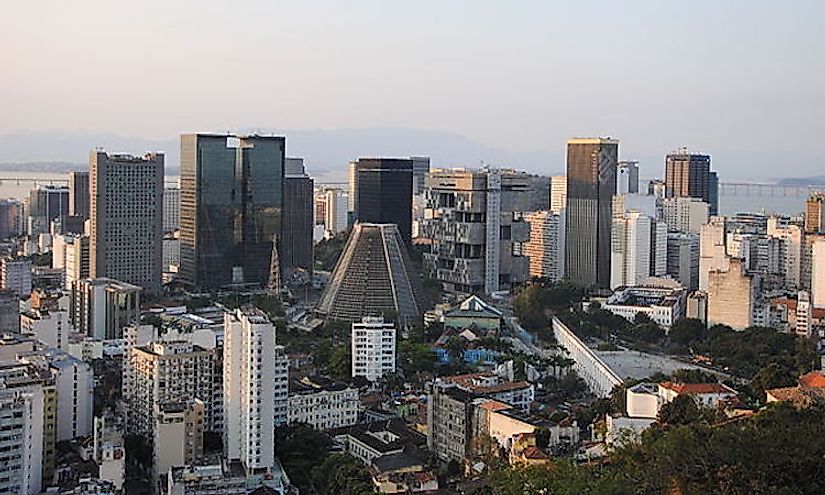The Economy Of Brazil

Brazil has the largest economy in Latin America and the world’s ninth largest economy by nominal GDP and the seventh largest by Purchasing Power Parity (PPP). Brazil is one of the countries referred to as BRICS, together with Russia, Indian, China, and South Africa, which are regarded as the five primary emerging global economies. The country’s economy is inward-oriented, and it is marked by moderate free markets.
Overview Of The Economy Of Brazil
Brazil has a GDP of $3.2 trillion and a nominal GDP of $2.0 trillion. The nominal GDP is ranked 9th and 7th by PPP. The country recorded a GPD growth rate of -3.7% in 2015 and -4.0% in 2016 and it is projected to grow by -0.2% in 2017. In 2015, Brazil’s GDP per capita was estimated at $16,000 while the nominal GDP was standing at $10,000. The service sector contributes 76% to the economy while industry and agriculture contribute 18.5% and 5.5% respectively.
Brazil experienced an inflation rate of 7.27% in 2015, while 15.4% of the population lives below the poverty line. The country’s unemployment rate is 7.5%, and it ranked 126th in regards to ease of doing business. Brazil’s labor force is estimated at 109 million distributed in various sectors as follows: services 71%, industry 13.3%, and agriculture 15.7%. The country’s public debt accounts for 67.3% of the GDP and its foreign investments are valued at $0.36 trillion. The state's revenues are estimated at $0.63 trillion and expenses at $0.64 trillion.
Leading Industries Of Brazil
The service sector in Brazil is dominated by hospitality, retail sales, financial services, professional services, and information technology. The primary products dominating the agriculture industry in Brazil are soybeans, corn, beef, sugar, wheat, cocoa, rice, chicken, and citrus. The major industries in the country are textiles, cement, petroleum processing, aerospace, motor vehicle and parts, iron and steel, equipment, and machinery.
Top Exports And Export Partners Of Brazil
Brazil is ranked 23rd largest export economy in the world. The leading export goods are transport equipment, soybeans, sugar, iron ore, crude petroleum, coffee, footwear, poultry meat, and automobiles. The top export partners are Chin, taking 18.6% of the total exports; US accounts for 12.7% of all exports while Argentina accounts for 6.7%, and the Netherlands 5.3%.
Top Imports And Import Partners Of Brazil
Brazil is the world’s 19th largest importing economy. The country’s top imports are machinery, refined and crude petroleum, chemicals, motor vehicle parts, transport equipment, and electronics. Brazil’s top import partners are China accounting for 17.9% of all imports, US accounts for 15.6 of imports, Germany accounts for 6.1%, while Argentina is 6.0%.
Challenges To Brazil’s Economy
Brazil has been undergoing a recession since 2014, before which it was the sixth largest economy in the world. The country’s exports have been decreasing in key markets such as China. As Brazil’s budget deficit increases so does public spending which remains a challenge to be reduced. The country’s debt is serviced by 7% of GDP, and the country has been unable to pay creditors since the recession began. Unemployment has also risen significantly in the country as the cost of living continues to increase. The wealth gap has become a reality in Brazil as 10% of the population control over 40% of the country’s wealth. This situation has led to the sprawling of favelas (slums) in metropolises. Inadequate infrastructure in the country makes it difficult to attract foreign investment.











